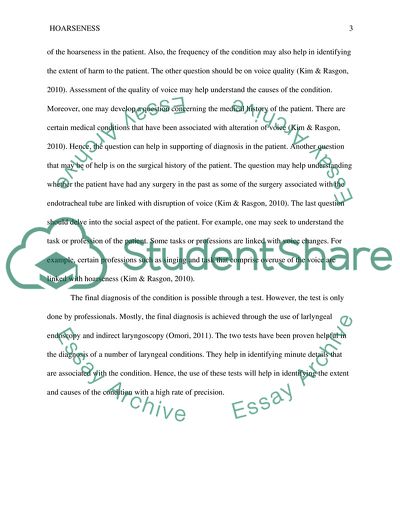HOARSENESS Assignment Example | Topics and Well Written Essays - 500 words. https://studentshare.org/medical-science/1871443-hoarseness-establishing-a-differential-diagnosis
HOARSENESS Assignment Example | Topics and Well Written Essays - 500 Words. https://studentshare.org/medical-science/1871443-hoarseness-establishing-a-differential-diagnosis.


